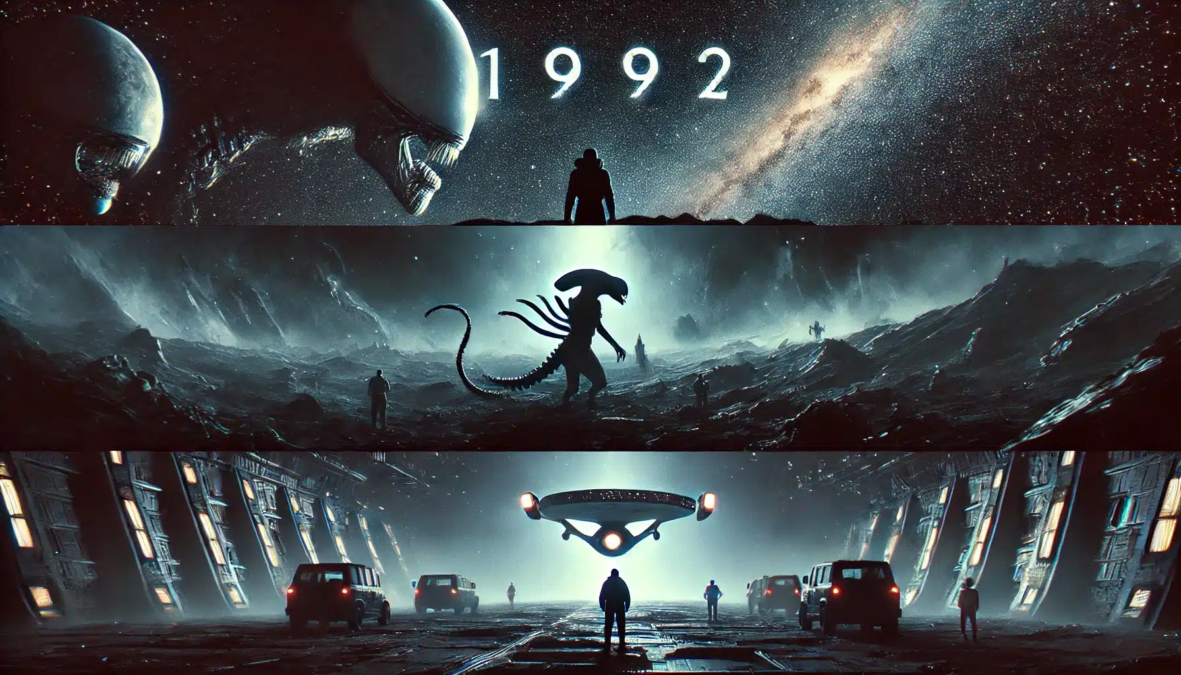The 1992 space movie genre holds a significant place in the history of science fiction films, as it marked the release of several iconic titles that left a lasting impact on audiences. This article delves into the world of the 1992 space movie, examining the highlights, notable releases, and the cultural and technological advancements that shaped this era in cinema.
The Rise of the 1992 Space Movie: A New Era in Sci-Fi Cinema
The early 1990s saw a resurgence in space-themed films, driven by advancements in visual effects technology and an increasing interest in exploring the vast mysteries of the universe. The 1992 space movie scene was a crucial turning point in the genre, offering a mix of innovative storytelling, groundbreaking effects, and compelling characters.
In 1992, space movies began to attract a wider audience, moving beyond the niche fan base of hardcore science fiction enthusiasts. With advancements in CGI (computer-generated imagery) and practical effects, the genre began to evolve, paving the way for both critical and commercial success. As a result, these films captured the imagination of millions and set the stage for the explosion of sci-fi franchises that would follow.
Notable 1992 Space Movie Releases
In 1992, several space-themed films made their way to the silver screen, each offering a unique take on the genre. While not all of these films reached the same level of popularity, they contributed to the growing space movie landscape and helped solidify the genre’s place in mainstream cinema. Let’s take a look at some of the key titles from the year:
Star Trek VI: The Undiscovered Country
One of the most iconic 1992 space movie releases was Star Trek VI: The Undiscovered Country. The sixth installment of the Star Trek franchise, directed by Nicholas Meyer, brought the beloved crew of the Starship Enterprise back for one final mission. The film tackled themes of political intrigue and the end of the Cold War, with a storyline that involved the crew’s efforts to prevent a war between the Federation and the Klingon Empire.
The film was a success both critically and commercially, serving as a fitting send-off for the original Star Trek cast. With its strong political undertones, action-packed sequences, and emotional moments, it remains one of the most celebrated entries in the Star Trek series.
Galaxy Quest
While not strictly a traditional “1992 space movie,” Galaxy Quest (released in 1999 but inspired by the ’90s space movie craze) became a cult classic that humorously parodied the space opera genre. The film, starring Tim Allen, Sigourney Weaver, and Alan Rickman, follows the cast of a cancelled TV show who are mistaken for real space heroes by an alien race. Their adventure in space is filled with comedy and adventure, showcasing the genre’s potential for humor and lightheartedness.

While Galaxy Quest was not released in 1992, its roots can be traced back to the spirit of the 1992 space movie era. It showcased the enduring popularity of space-themed narratives during this time, contributing to the rise of more parody-driven works in the years to come.
The Lawnmower Man
Another noteworthy title is The Lawnmower Man, a 1992 film that combined elements of cyberpunk with science fiction. While it is not strictly a “space movie” in the traditional sense, it explored the intersection of technology, virtual reality, and artificial intelligence. The film’s futuristic exploration of cyberspace and the potential for human enhancement through technology resonated with audiences during a time of rapid technological advancements in real life.
Directed by Brett Leonard, The Lawnmower Man explored themes of digital evolution, showcasing the fears and wonders of an increasingly digital world. While it didn’t take place in outer space, the film captured the essence of the 1992 space movie era by pushing boundaries in terms of science fiction concepts.
The Impact of Technological Advancements on the 1992 Space Movie Landscape
The early ’90s were a time of technological innovation, and the 1992 space movie landscape was significantly impacted by these advancements. Visual effects were a critical component of any space-themed film, and by 1992, filmmakers had access to advanced computer-generated imagery (CGI) that allowed them to create more detailed and realistic depictions of space travel, alien creatures, and futuristic technology.
For example, Star Trek VI: The Undiscovered Country featured impressive space battles, with intricate visual effects that highlighted the technological possibilities of the time. Meanwhile, The Lawnmower Man pushed the boundaries of virtual reality effects, creating a digital world that felt groundbreaking for its time.
These technological advancements were crucial for immersing audiences in the sci-fi worlds depicted in the 1992 space movie genre. CGI and practical effects helped create more convincing depictions of space travel, alien life, and future technology, enhancing the viewer’s sense of wonder and possibility.
The 1992 Space Movie: Cultural and Social Context
The space movie genre of 1992 also emerged during a period of significant cultural and social change. The end of the Cold War, the growing influence of the internet, and advancements in space exploration all contributed to the themes and narratives explored in films during this time.
For instance, Star Trek VI: The Undiscovered Country used the metaphor of interstellar diplomacy to reflect the real-world political climate of the early ’90s. The film addressed themes of peace, unity, and overcoming old adversities, which mirrored the optimism surrounding the collapse of the Soviet Union and the shift towards a new world order.
Additionally, the growing fascination with technology, as seen in films like The Lawnmower Man, reflected the increasing importance of the digital age in society. These films explored how humanity’s relationship with technology could evolve, raising questions about the potential dangers and rewards of innovation.
Legacy of the 1992 Space Movie and Its Influence on Modern Sci-Fi Films
The 1992 space movie era laid the foundation for many of the sci-fi films that followed in the late ’90s and early 2000s. The technology, themes, and stories explored in these films would influence a new generation of filmmakers who continued to push the boundaries of space exploration in cinema.

Today, many modern sci-fi films draw on the aesthetic and narrative elements established in the 1992 space movie genre. Films like Interstellar (2014) and The Martian (2015) continue to explore themes of space travel, technological advancement, and the human condition in ways that echo the films of the early ’90s.
Conclusion: The Enduring Appeal of the 1992 Space Movie
The 1992 space movie genre holds a special place in the history of science fiction cinema. It was a time when technological innovation, cultural shifts, and imaginative storytelling came together to create films that resonated with audiences and left a lasting impact on the genre. From the political intrigue of Star Trek VI to the digital exploration in The Lawnmower Man, the 1992 space movie landscape showcased the breadth and potential of space-themed narratives.
Today, these films continue to be remembered and celebrated for their contributions to the sci-fi genre, influencing filmmakers and fans alike. The legacy of the 1992 space movie era remains strong, and its influence can still be seen in the space movies of today.
